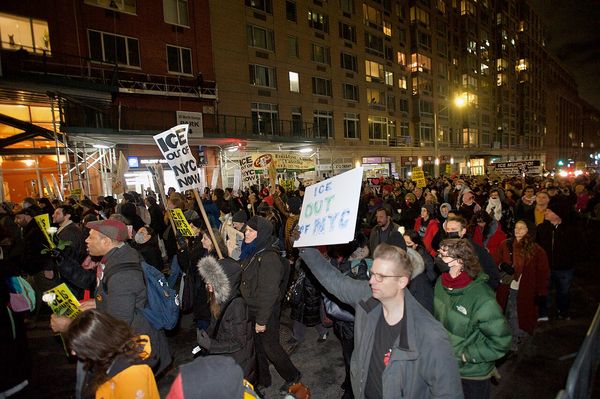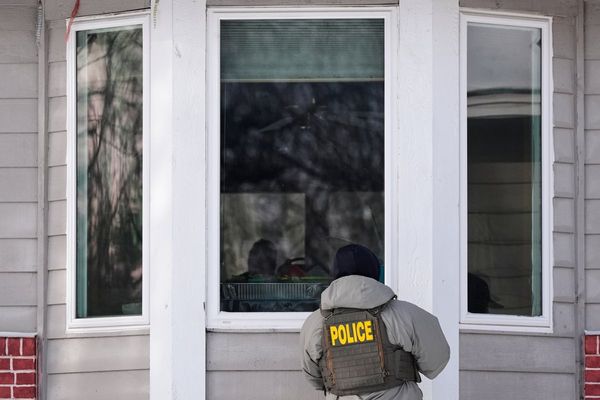
Temperatures in Britain hit 40C. Runways melt at major airports. The London fire brigade reports its busiest single day since the second world war as fires rage around the city. The Met Office warns of temperatures so high they “could lead to serious illness or loss of life”.
Meanwhile, inflation grinds inexorably upwards. Russia’s invasion of Ukraine is part of it, but other pressures were already apparent. Staples such as coffee saw price rises as a result of extreme weather disrupting harvests. Even silicon chips have been affected, with droughts in Taiwan putting the hugely water-intensive production of semiconductors at risk.
The environmental crisis isn’t going away. The best available projections from climate forecasters point to greater instability – more heatwaves, more floods, worse shortages of food, even an increased risk of future pandemics. Yet this unavoidable and hugely costly instability, now becoming a part of our daily lives, scarcely seems to register with the institutions charged with managing the economy.
Official forecasts, prepared by the Office for Budget Responsibility (OBR), actually show inflation fading away rapidly over this year and a return to normal inflation and rates of growth over the next two years, as “output grows broadly in line with the economy’s productive potential”. Similarly, the latest Bank of England report predicts that the external shocks we see will wane, and inflation will return to its normal 2% target level in two to three years.
The government’s own plans for the immediate economic future are built around this belief in a strikingly rapid return to normality, with the Treasury using the OBR’s forecasts for its planning. Its only recognition of “higher than usual” uncertainty comes from Russia’s invasion of Ukraine, not environmental instability.
This isn’t some quirk of the official forecasters. The assumption of a certain kind of stability over time is hardwired into many of the kinds of economic models used today. That even if the economy is temporarily knocked off-balance, it will swing, eventually, back to its steady growth path, plodding on into the future. “Shocks” such as sudden hikes in the price of oil, or wars in eastern Europe, may happen, but, like a roly-poly toy, the economy springs back to where it was before.
Any deviation from this stable, long-run growth path is assumed by the models to be temporary, with the deep structures of the economy – demographics and technological change, primarily – asserting themselves over any short-term fluctuations. The big question is how quickly the economy can respond to a shock, and get back to its long-run path.
From the birth of modern economics two centuries ago until now, this unstated assumption didn’t matter. The Earth’s climate was broadly stable. But what if the environmental shocks just keep coming? Think about the last few years: from peat fires in summer 2019 to the extraordinary (and ongoing) disruption of Covid, to the extreme heat this year. The shocks have not ended, and, if the climate forecasters are correct, they will most likely get bigger and more frequent from this point onwards. The serious danger is that economic models insisting on a return to stable normality will lead our policymaking dramatically astray.
This is already happening. The Bank of England’s insistence on trying to push up interest rates is a case in point. In the face of massive, global disruptions to the production and sale of goods and services, from Covid to war to food shortages, the Bank’s insistence on attempting to add to these increased costs and shortages by raising the price of borrowing is perverse. There is no interest rate in London that will reduce the price of gas from Qatar or cause more wheat to be grown in Canada: the Bank’s governor, Andrew Bailey, has made a similar point himself. All the interest-rate rise can do is increase the risk of recession, as demand is sucked out of the economy, and further squeeze households.
Worse, if the environmental shocks keep coming, creating further shortages and pushing up prices, the Bank’s own models – incorrectly predicting a rapid return to “normality” – will be leaning it towards further rate rises in response. Meanwhile, plans for public spending and future investment, drawn up in the Treasury, will seriously understate the amount of either needed in a world of frequent environmental shocks – risking, in this case, higher than expected government borrowing, as additional emergency spending is pushed through.
It’s past time for a new approach, from the fundamental design of our economic models to the kind of economic management pursued by government. A starting point would be to focus on the requirements of protection, rather than the assumption of future growth. Focusing on things such as support for incomes, including real-terms pay, pensions and benefits increases, as a monetary insurance for households against future environmental shocks. And to invest hugely, not only in efforts to reduce greenhouse gas emissions, but in building in the kind of protections against extreme weather, from flood defences to home insulation, that are now tragically necessary.
James Meadway is director of the Progressive Economy Forum







